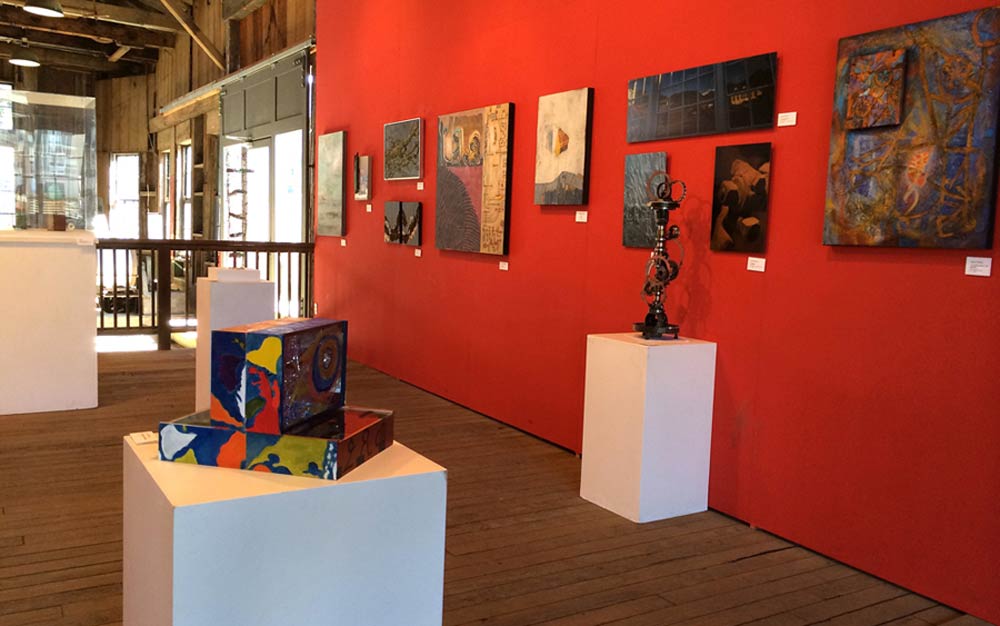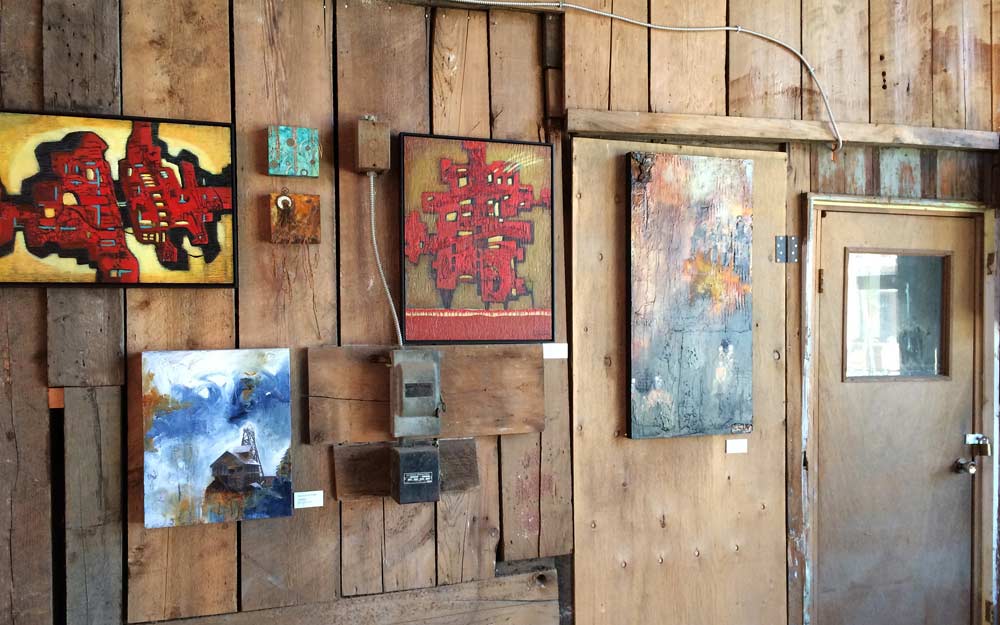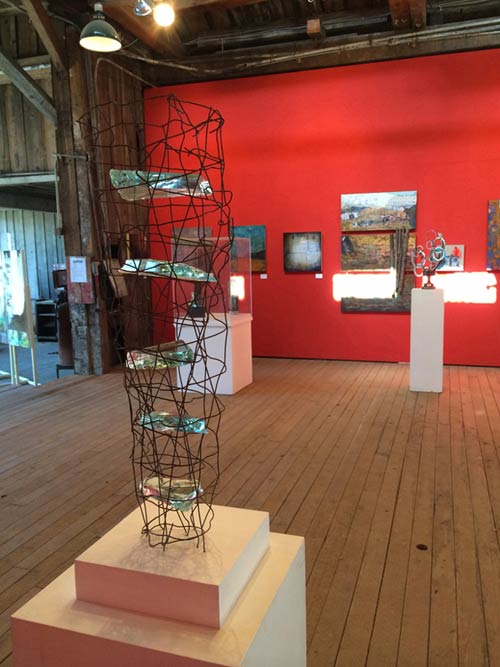Curating an Art Show Part 2 – Breaking Ground
 Working alongside artist Jeanne Krabbendam to curate the Breaking Ground exhibit at the Britannia Mine Museum helped inform me as an artist. It not only gave me a greater appreciation of the effort to put on an exhibit but also a greater understanding of the process when applying for shows. At first glance, curating an art show appears daunting. But when broken down into stages, it feels a lot more manageable. Time and energy were also chunked together in the same way from coordinating the artist call, to selecting the artwork and culminating during the week of the hanging.
Working alongside artist Jeanne Krabbendam to curate the Breaking Ground exhibit at the Britannia Mine Museum helped inform me as an artist. It not only gave me a greater appreciation of the effort to put on an exhibit but also a greater understanding of the process when applying for shows. At first glance, curating an art show appears daunting. But when broken down into stages, it feels a lot more manageable. Time and energy were also chunked together in the same way from coordinating the artist call, to selecting the artwork and culminating during the week of the hanging.
Communicating Clarity
Throughout the process, clear communication was of the utmost importance. Things I normally would have considered to be common sense couldn’t be left out in the communication. Being specific as possible in the submission and any instructions avoids any potential for miscommunication or misinterpretation.
Making the Cut
 Having to select artwork by other artists was much more enjoyable that I anticipated. It was freeing for me to be able to make decisions about images relatively quickly. When compared to viewing your own artwork, there isn’t that history of knowing the personal investment of time and energy that went into the piece. I was able to look at them with fresh eyes so it was much easier to decide. There is something to be said about relying on instinct but it is informed from regularly looking at a wide variety of artwork over time. I take this from my work in photography where regular practice allows for development of an eye to shoot and frame images. Similarly, looking at a lot of art helps develop a sensibility of what works and what doesn’t.
Having to select artwork by other artists was much more enjoyable that I anticipated. It was freeing for me to be able to make decisions about images relatively quickly. When compared to viewing your own artwork, there isn’t that history of knowing the personal investment of time and energy that went into the piece. I was able to look at them with fresh eyes so it was much easier to decide. There is something to be said about relying on instinct but it is informed from regularly looking at a wide variety of artwork over time. I take this from my work in photography where regular practice allows for development of an eye to shoot and frame images. Similarly, looking at a lot of art helps develop a sensibility of what works and what doesn’t.
I also became more aware of the photo quality of the submissions. If there was uncertainty about whether the photo was an accurate reflection of the painting or not, it felt very risky to choose it and not knowing whether it would appear better in person. It reinforces for me the importance of spending the time to document my art work in the best way possible.
Understanding the inspiration and concept behind the artwork can influence decision making. This particular submission didn’t ask for any accompanying statements. However, for the first time I wanted to have some artist statements to refer to. I find writing artist statements challenging but realized that they really do give insight into your process and ideas. If I was undecided about a piece, Jeanne’s personal knowledge about the artist and work often changed my mind.
Installation
When trying to arrange this many pieces of artwork, efficiency counts. A simple thing like wiring which I previously saw as not being a high priority became one of the key ingredients needed for a smooth hanging. This being that if all work was consistently wired in the same manner, measuring and hanging gets completed much more quickly. This is even more challenging to do on your own as each of us handled arranging a different portion of the show. I’m used to having someone assist me with each task so it gives me more factors to consider if I am ever in the situation of hanging my work alone.
 Arranging the 3D work came last. Positioning the 3D work takes into consideration the overall flow through the space and how it interacts with the 2D work. Having a mixture of 2D and 3D work makes the show feels well rounded and more complete to me. It is much like an orchestral feat in that everything supports and enhances each other to work as a whole.
Arranging the 3D work came last. Positioning the 3D work takes into consideration the overall flow through the space and how it interacts with the 2D work. Having a mixture of 2D and 3D work makes the show feels well rounded and more complete to me. It is much like an orchestral feat in that everything supports and enhances each other to work as a whole.
One of the best things about curating a group show like this is that the art is all different and unique yet there is a common thread that ties everything together. I already have a strong affinity for mixed media art so it felt very natural and fun to help curate this exhibit. I think with time and experience the process will only become easier and it is an area that holds possibilities for me to explore further.
